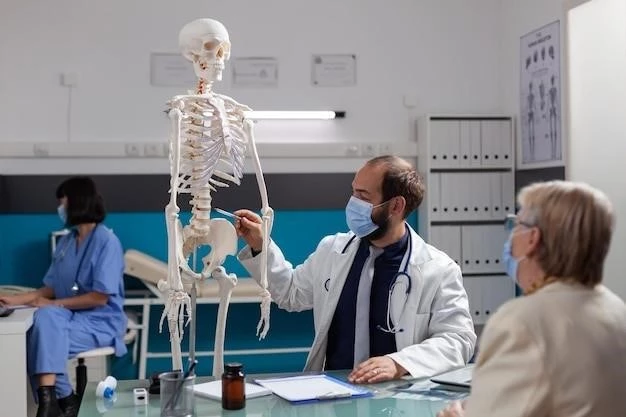Article Plan⁚ Disease ー Osteochondritis Deformans Juvenile
Introduction to Juvenile Osteochondritis Dissecans
Juvenile osteochondritis dissecans (OCD) is a condition that commonly affects children‚ causing knee pain and joint dysfunction. Recent studies show an increasing incidence of this disorder in pediatric patients‚ particularly those under 10 years old. The condition is characterized by focal breakdown of the subchondral bone and articular cartilage‚ primarily in the knee joints. Understanding the distinctions between juvenile OCD and adult OCD is crucial for accurate diagnosis and treatment. Here‚ we delve into the pathophysiology‚ diagnosis‚ and treatment options for juvenile OCD to provide comprehensive insights into managing this condition.
Symptoms and Diagnosis
Juvenile osteochondritis dissecans (OCD) manifests with symptoms such as joint pain‚ swelling‚ and stiffness‚ particularly in the knee. Children may experience restricted range of motion‚ catching or locking sensations in the joint‚ and joint instability. Diagnosis involves a thorough physical examination‚ imaging studies like MRI or CT scans to visualize the affected joint‚ and potentially arthroscopy for direct visualization. Early detection is vital to prevent complications and initiate appropriate treatment for juvenile OCD.
Causes and Risk Factors
Juvenile osteochondritis dissecans (OCD) is a condition of unclear cause in skeletally immature patients. Risk factors may include repetitive microtrauma‚ a vascular insult‚ or a genetic predisposition. The disorder leads to mechanical symptoms due to instability of OCD lesions‚ potentially resulting in premature osteoarthritis. Understanding the possible causes and risk factors can help in preventive strategies and tailored treatment approaches for juvenile OCD.
Pathophysiology of the Condition

Juvenile osteochondritis dissecans (OCD) is a condition affecting the subchondral bone in skeletally immature patients. The exact cause remains unclear‚ but factors such as repetitive microtrauma‚ vascular compromise‚ or genetic predisposition may play a role. This disorder leads to the separation of a bone segment from the articular surface‚ resulting in mechanical symptoms and potential premature osteoarthritis. Understanding the underlying pathophysiology is crucial for designing effective treatment strategies for juvenile OCD.
Epidemiology and Incidence
Juvenile osteochondritis dissecans (OCD) is increasingly prevalent among pediatric patients‚ with a rise in cases affecting children under the age of 10. This condition‚ characterized by focal subchondral bone breakdown‚ predominantly impacts the knee joint. While there is a growing incidence of juvenile OCD‚ understanding its epidemiology can aid in early diagnosis and tailored management‚ emphasizing the importance of prompt detection and appropriate treatment to mitigate long-term consequences.

Differentiating Juvenile OCD from Adult OCD
It is essential to distinguish between juvenile osteochondritis dissecans (OCD) and adult OCD due to varying clinical presentations and prognoses. Juvenile OCD predominantly affects skeletally immature individuals‚ often manifesting in children under 10 years old. The condition is characterized by focal subchondral bone breakdown‚ primarily in the knee joints. In contrast‚ adult OCD typically occurs in older individuals and may affect different joints. Understanding these age-related differences is crucial for accurate diagnosis and optimal management of OCD cases.
Complications Associated with Juvenile Osteochondritis Dissecans
Juvenile osteochondritis dissecans (OCD) may lead to various complications if left untreated. These complications can include persistent joint pain‚ joint instability‚ cartilage damage‚ restricted movement‚ and in severe cases‚ the development of early-onset osteoarthritis. It is crucial to address juvenile OCD promptly to prevent these complications and improve long-term joint health. Seeking timely medical intervention and appropriate management strategies can help mitigate the impact of complications associated with juvenile OCD.
Treatment Options for Juvenile OCD
When it comes to treating juvenile osteochondritis dissecans (OCD)‚ management focuses on addressing the underlying bone and cartilage abnormalities to prevent long-term joint issues. Non-surgical treatment options may include activity modification‚ physical therapy‚ and bracing to stabilize the joint. In cases where symptoms persist or worsen‚ surgical intervention‚ such as drilling‚ fixation‚ or cartilage repair procedures‚ may be necessary to promote healing and restore joint function. It is crucial to consult with a healthcare professional to determine the most suitable treatment plan tailored to the individual needs of the patient.
Surgical Interventions
For juvenile osteochondritis dissecans (OCD)‚ surgical interventions may be considered when conservative treatments fail to provide relief or halt disease progression. Procedures like drilling‚ fixation methods‚ or cartilage repair techniques aim to address the underlying bone and cartilage abnormalities in the affected joint. Surgery can help promote healing‚ stabilize the joint‚ and restore function. Consultation with an orthopedic surgeon is crucial to determine the most suitable surgical approach tailored to the individual’s condition and needs.
Prognosis and Long-Term Outcomes
The prognosis for juvenile osteochondritis dissecans (OCD) can vary depending on the severity of the condition and the chosen treatment approach. Early diagnosis and appropriate management are key factors in achieving better long-term outcomes. With timely intervention and adherence to treatment plans‚ many individuals with juvenile OCD can experience significant improvement in symptoms and joint function. It is essential to follow up with healthcare providers regularly to monitor progress and ensure optimal outcomes in the management of juvenile OCD.
Novel Research and Future Directions
Recent research on juvenile osteochondritis dissecans (OCD) has focused on innovative treatment approaches and prognostic factors. Studies have explored advanced surgical techniques like autologous matrix-induced chondrogenesis‚ mosaic osteochondral transplantation‚ and microfracture for better outcomes in managing OCD lesions. Additionally‚ research aims to identify predictive factors for successful nonoperative treatment and to enhance understanding of the healing potential of stable juvenile OCD lesions. Collaborative efforts in this field continue to pave the way for improved management strategies and enhanced patient outcomes in the future.
Prevention Strategies for Juvenile Osteochondritis Dissecans
While the exact cause of juvenile osteochondritis dissecans (OCD) remains unclear‚ there are preventive measures that can be beneficial in reducing the risk of developing this condition. Engaging in activities that promote joint health and avoiding repetitive stress on the joints‚ especially in children involved in sports‚ may help prevent the onset of juvenile OCD. Additionally‚ maintaining a healthy weight and ensuring proper nutrition can contribute to overall joint wellness and potentially lower the likelihood of developing OCD lesions. Consultation with healthcare providers for personalized guidance on preventive strategies is recommended for individuals at risk of juvenile OCD.
Conclusion and Key Takeaways
Juvenile osteochondritis dissecans (OCD) presents unique challenges‚ especially in pediatric patients‚ where early diagnosis and appropriate treatment are essential for improved outcomes. Identifying the distinguishing features of juvenile OCD and understanding its pathophysiology are crucial steps in effective management. With evolving research focusing on innovative treatments and prognostic factors‚ there is hope for enhanced strategies to address this condition more effectively in the future. By heeding preventive measures and seeking timely medical interventions‚ individuals can strive for better joint health and long-term well-being amidst juvenile OCD challenges.
